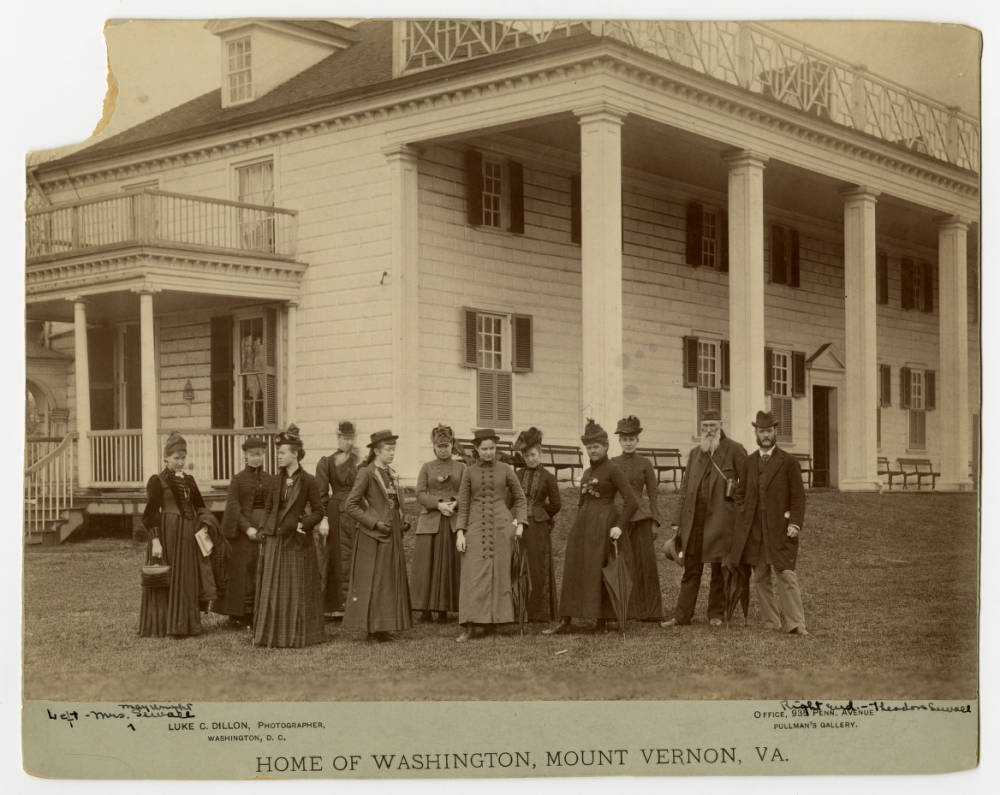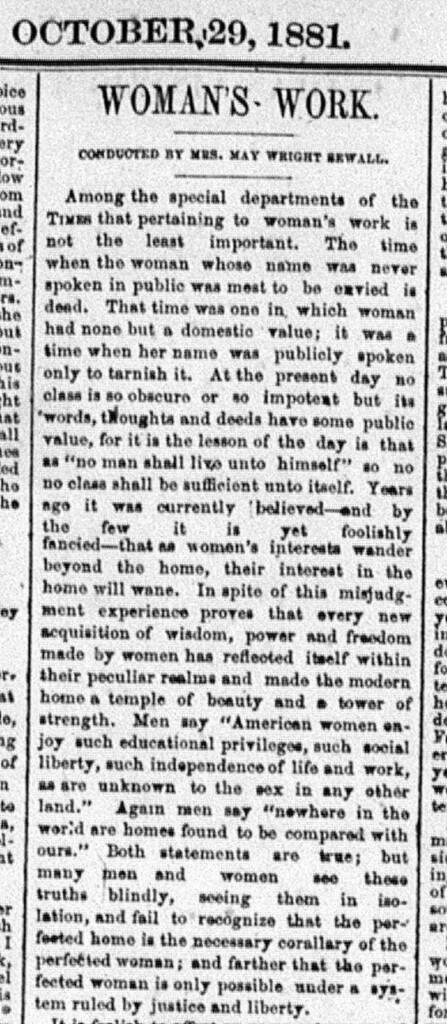It is easy to forget that women’s rights and suffrage efforts in the U.S. began much earlier than most of us realize. One such intrepid pioneer for women’s rights was the indomitable May Wright Sewall. Although born in Wisconsin, she and her husband moved to Indiana in the early 1870s. She was well-known around the state for being a proponent for equal and better-quality education for women. She later established the Indianapolis Classical School for Girls, which became a prestigious preparatory school.

May Wright Sewall, standing at the left end, and a group of women at Mount Vernon in Virginia. from the Indiana State Library’s Digital Collections.
Sewall believed women should have lives outside the home that included educational and cultural opportunities. She was a founder and first president of the Indiana Woman’s Club, which was founded in 1888. Sewall was instrumental in establishing the Indianapolis Propylaeum, which was a house built specifically for the cultural and educational edification of women’s clubs, including the Indiana Woman’s Club. A patron of the arts throughout her life, she was an officer in the Art Association in Indianapolis and was instrumental in helping establish the John Herron School of Art. Sewall was also a nationally known suffragist, and from 1899-1904, she was president of the International Council of Women.
In 1881, Sewall started writing a bi-weekly column in the early iteration of the Indianapolis Times. The column’s title was Woman’s Work. In the first article, which ran on Oct. 29, 1881, she states the reasons for the existence of the column and her goals in creating it. She notes that often, women’s names were not mentioned in newspapers or indeed in public unless they were the subject of a scandal or had died. She hoped that through her column, she could bring the importance of women’s “invisible” work in and outside the home to the forefront of the public’s attention.
This blog post was written by Leigh Anne Johnson, Indiana Division newspaper librarian, Indiana State Library. For more information, contact the Indiana Division at 317-232-3670 or via “Ask-A-Librarian.”









